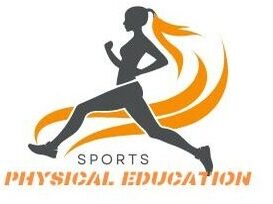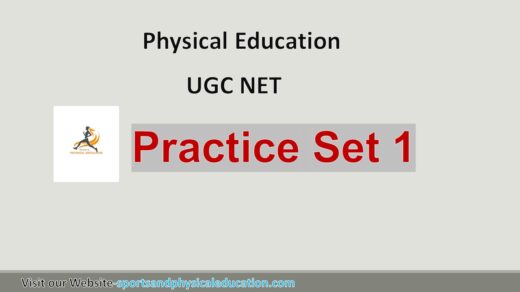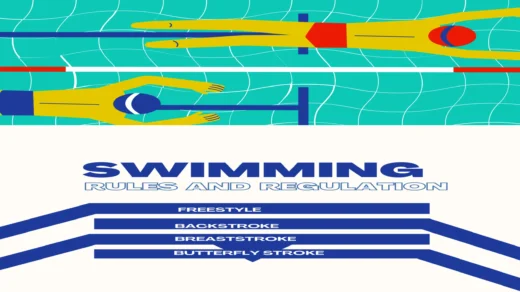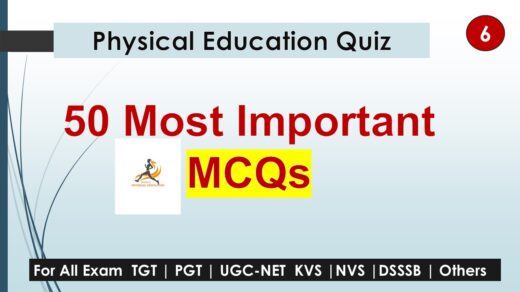PE UGC NET PRATICE SET 3:
PE UGC NET PRATICE SET 3 is part 3 of the UGC NET practice quiz. This quiz is designed to help aspirants prepare for the UGC NET Physical Education examination. It covers advanced topics such as sports psychology, biomechanics, training methods, research methodologies, and current trends in physical education. The questions are structured to test both theoretical understanding and practical applications, making it an ideal resource for comprehensive preparation.
Quiz: Questions And Answers:-
Find the correct sequence from the code given below :
(a) Compression (b) Stabilization (c) Ice (d) Rest (e) Elevation
Find the correct sequence of periods in the Gait Cycle of walking :
(a) Terminal Swing (b) Pre-Swing
(c) Initial Contact (d) Initial Swing
(e) Loading Response (f) Mid Stance
(g) Terminal Stance (h) Mid Swing
Arrange the following articulating surfaces of various joint of body from top to bottom if a person is standing in anatomical position :
(a) Acetabulum (b) Glenoid Cavity
(c) Medial and Lateral Condyle (d) Trochlear Notch
Find the correct chronological order of theories from the code given below :
(a) Life Cycle Theory of Leadership
(b) Two Factor Theory of Aggression
(c) Need Achievement Theory of Motivation
(d) Reversal Theory of Anxiety
A model curriculum to acquire significant outcome for students, needs proper conceptualization. Arrange the following in sequential order :
(a) Define the goal for instructional practices.
(b)Assess how instructional practices and organisational conditions can help/hinder achievement of outcome.
(c) Develop a clear programme vision.
(d) Develop the curriculum plan.
Find out the correct chronological sequence of four distinct phases of public health from the code given below :
(a) Social engineering phase (b) Disease control phase
(c) Health for all phase (d) Health promotional phase
Arrange the objectives of a School Health Programme in right sequential order and select the correct answers from the code given below :
(a) Prevention of disease.
(b) Early diagnosis and treatment.
(c) Awakening health consciousness in students and staff.
(d) The provision of healthful school environment.
Find the correct sequence of the steps for the formulation of an Yearly Plan :
(a) Determination of goal and sub-goals
(b) Determination of periods and meso-cycles
(c) Determination of load dynamics and indices
(d) Performance prognosis and determination of performance structure
(e) Determination of dates of tests, controls, competitions
Find the correct sequence from the code given below :
(a) Efferent process
(b) Action of the concerned muscles
(c) Forming of movement programme
(d) Execution of movement starts
(e) Afference process
Arrange the following anthropometric landmarks in a sequence from top to bottom when a person is standing in anatomical position from the code given below :
(a) Styloid Process (b) Tragion
(c) Medial Malleolus (d) Xiphoid Process
Sequentially arrange the components of care and maintenance of equipment using the code given below :
(a) Checking (b) Cleaning (c) Counting (d) Repairing (e) Dusting
Arrange in sequential order of Principles of Effective Budgeting.
(a) Be prepared early. (b) Be Flexible.
(c) Be Realistic. (d) Be easily Understood.
(e) Be based on Program Objectives.
Which are the purposes of Measurement and Evaluation ?
(a) Prediction (b) Motivation
(c) Achievement (d) Diagnosis
Find the hierarchical arrangement from simple to complex in the cognitive domain from the code given below :
(a) Synthesis (b) Analysis
(c) Knowledge (d) Evaluation
(e) Application (f) Comprehension
Given below are two statements, one labelled as Assertion (A) and the other labelled as Reason (R) :
Assertion (A) : Orientation should neither be too long nor too short but “adequate”.
Reason (R) : Teaching technique orientation is a “get set” position in sprint run.
Given below are two statements, one labelled as Assertion (A) and the other labelled as Reason (R) :
Assertion (A) : Maintaining a crouched position in 100 m start is costly in terms of muscular energy requirement due to the force-length relationship of muscle and the increased joint movements. But Biomechanically it has advantage.
Reason (R) : Balance is enhanced by increasing the size of the base of support in the direction of the disturbing force.
Given below are two statements, one labelled as Assertion (A) and the other labelled as Reason (R) :
Assertion (A) : Of vital importance to the success of any testing programme is the attitude with which the students approach the tests.
Reason (R) : The physical educator should seek to capitalize on the positive motivating properties that are generally inherent in physical performance tests.
Given below are two statements, one labelled as Assertion (A) and the other labelled as Reason (R) :
Assertion (A) : Management is a process of “Performing or accomplishing things”.
Reason (R) : An ingenious way of dealing with human beings is an art of human
engineering.
Given below are two statements, one labelled as Assertion (A) and the other labelled as Reason (R) :
Assertion (A) : Validity of Physical Fitness tests is determined using composite scores of all the test items in the battery as the performance criterion.
Reason (R) : While establishing the validity, the test items should also be correlated to eliminate duplication.
Given below are two statements, one labelled as Assertion (A) and the other labelled as Reason (R) :
Assertion (A) : When the tester is interested in obtaining the reliability of multiple trials or the objectivity of a test with more than two judges, Inter class correlation coefficient by Analysis of variance is applied.
Reason (R) : Product moment correlation does not permit through examination of the different sources of variability on multiple trials.
If you liked the Physical Education UGC NET PRATICE SET 1 quiz, feel free to leave a comment or correct any questions that display the wrong answer. Also, subscribe to us on YouTube and try other quizzes on this website to keep your exam preparation on track.




